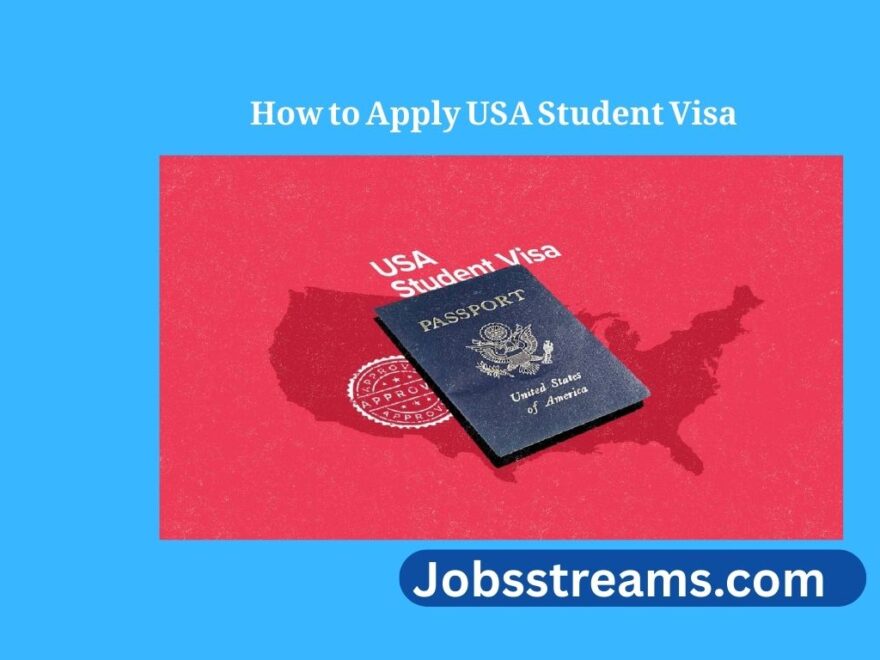Studying in the United States is a dream for many international students due to its world-renowned universities, research opportunities, and diverse academic programs. To study in the U.S., international students must obtain a student visa, most commonly the F-1 visa.
This guide explains everything you need to know about getting a U.S. student visa — from types of visas and eligibility to application steps, fees, and FAQs.
Types of U.S. Student Visas
| Visa Type | Purpose | Eligibility |
|---|---|---|
| F-1 Visa | Academic studies at universities, colleges, or schools | Accepted by a SEVP-approved institution |
| M-1 Visa | Non-academic/vocational training (e.g., technical school) | Accepted by a vocational/non-academic institution |
| J-1 Visa | Exchange visitor programs (research, study, internship) | Sponsored by an exchange program (government or private) |
Eligibility Criteria for a U.S. Student Visa
To qualify for a student visa, applicants must:
- Be accepted by a SEVP-approved U.S. school or university
- Be proficient in English or enrolled in English language training
- Have sufficient funds to cover tuition and living expenses
- Prove that they intend to return to their home country after study
- Maintain a valid passport
Step-by-Step Process to Apply for a U.S. Student Visa
| Step | Action |
|---|---|
| 1 | Get admission and Form I-20 from a SEVP-certified institution |
| 2 | Pay the SEVIS I-901 fee ($350 for F-1/M-1) |
| 3 | Complete the DS-160 visa application form online |
| 4 | Pay the visa application fee (approx. $185) |
| 5 | Schedule your visa interview at a U.S. embassy or consulate |
| 6 | Attend the interview with required documents |
| 7 | Wait for visa approval and collect your passport |
Required Documents for F-1 Student Visa
| Document | Purpose |
|---|---|
| Valid Passport | Must be valid for at least 6 months |
| Form I-20 (from U.S. institution) | Proof of admission and SEVIS registration |
| DS-160 Confirmation Page | Visa application proof |
| SEVIS Fee Payment Receipt | Confirms payment of $350 SEVIS fee |
| Visa Fee Receipt | Proof of visa application fee payment |
| Academic Documents | Transcripts, certificates, test scores |
| Financial Proof | Bank statements, sponsorship letters |
| Passport-Sized Photo | As per U.S. visa photo guidelines |
| Visa Interview Appointment Letter | Confirms your scheduled interview |
F-1 Visa Interview: Common Questions
During your interview, the officer may ask about:
- Your academic goals and chosen course
- Why you chose the particular university
- How you plan to finance your studies
- Your ties to your home country and future plans
- English language proficiency
USA Student Visa Processing Time
| Stage | Timeframe |
|---|---|
| SEVIS Fee Processing | Instant or 1–2 days |
| DS-160 Application | Can be submitted immediately |
| Visa Interview Wait Time | 1 day to several weeks (varies) |
| Visa Processing After Interview | 2–7 business days (typical) |
Tip: Apply for your visa at least 2–3 months before your course start date.
F-1 Visa Validity and Stay Duration
- Visa validity: Depends on your course length (often 1–5 years)
- Stay allowed: Until your program end date + 60-day grace period
- Can be extended or transitioned to OPT, CPT, or H-1B (work visa)
FAQs – U.S. Student Visa
Q1. Can I work in the U.S. on an F-1 visa?
Yes. F-1 students can work on-campus for up to 20 hours per week. For off-campus work, they must apply for CPT or OPT.
Q2. What is the SEVIS fee and who pays it?
The SEVIS I-901 fee ($350 for F-1) is a mandatory charge for maintaining student visa records. Students must pay it before the visa interview.
Q3. How early can I enter the U.S. after getting a student visa?
You can enter the U.S. 30 days before the program start date mentioned on your I-20 form.
Q4. Can my dependents join me in the U.S.?
Yes, dependents (spouse and children) can apply for an F-2 visa. However, they are not allowed to work.
Q5. What happens if my visa is denied?
You will be informed of the reason. You may reapply after addressing the issue, such as providing more documents or clarification.
Conclusion
Getting a student visa for the USA is a key step in pursuing your educational dreams. While the process may seem complex, proper planning, preparation, and documentation can ensure a smooth experience. With an F-1 or M-1 visa, you can access world-class education and opportunities for personal and professional growth.
